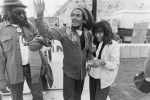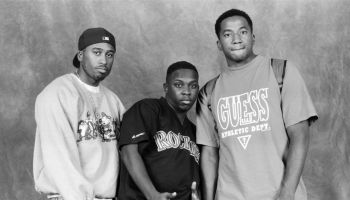NEW YORK (AP) — It was on the streets of her Harlem neighborhood in the 1940s that teenager Althea Gibson began working on the tennis skills that would take her all the way to winning Wimbledon.
But according to the 1940 census, the trailblazing athlete didn’t even exist.
There’s no record of Gibson and her family in the decennial census, the records of which were released online to the public April 2 by the U.S. National Archives after a 72-year confidentiality period lapsed.
She and her family aren’t the only ones — more than a million black people weren’t accounted for in 1940, an undercount that had ramifications at the time on everything from the political map to the distribution of resources.
It also had an impact on the Census Bureau itself, the agency said, leading to efforts that continue to this day as it counts people every decade, to assess how well it managed to count people and to determine what could be done to improve. An analysis of the 2010 Census’ efficacy is being released May 22.
The undercount estimate has generally gone down, but it’s always been disproportionately higher for blacks than nonblacks.
There are a variety of reasons for undercounts — people move around; people may not know or be reluctant to answer government questions; address lists may be inaccurate; extremely crowded areas can be difficult to count, as can extremely isolated areas. Experts believe some of those factors weigh more heavily on minority undercounts, particularly the challenges of counting in urban areas.
The 1940 census was long known to have a black undercount. Evidence of it was found within a decade in a demographic study of young children and another of draft-age men. But modern-day genealogists digging into the newly released 1940 census records may be rediscovering it when they cannot locate their relatives or friends.
The absence of Gibson and her family in the available records points toward an omission.
Celedonia “Cal” Jones knows that Gibson lived in Harlem at the time, because the Manhattan borough historian emeritus grew up on the same block as her and remembers playing with her as a child.
“I know she lived on the block, because she used to dominate the paddle tennis,” Jones said. “Her nickname was ‘tomboy.'”
It can be difficult to find entries in the 1940 census, since there’s no complete name index for the records currently available and won’t be for a few months longer. But Lillian Chisholm, Gibson’s sole surviving sister who was born in August 1940, confirmed the family lived at 135 W. 143rd St. at that time, making it possible to look up the census ledger.
An enumerator visited the building on at least five occasions in April 1940, according to the census records. An Associated Press review of the records found no listing of Gibson, who was 12 at the time, or her parents, at that address, though other building residents were counted.
There had been anecdotal information of population undercounts in previous censuses, but it was the data from the 1940 effort that really made it clear, said Phil Sparks, former associate director of the bureau and now co-director of The Census Project, which advocates for an accurate count.
Read more at Black America Web














